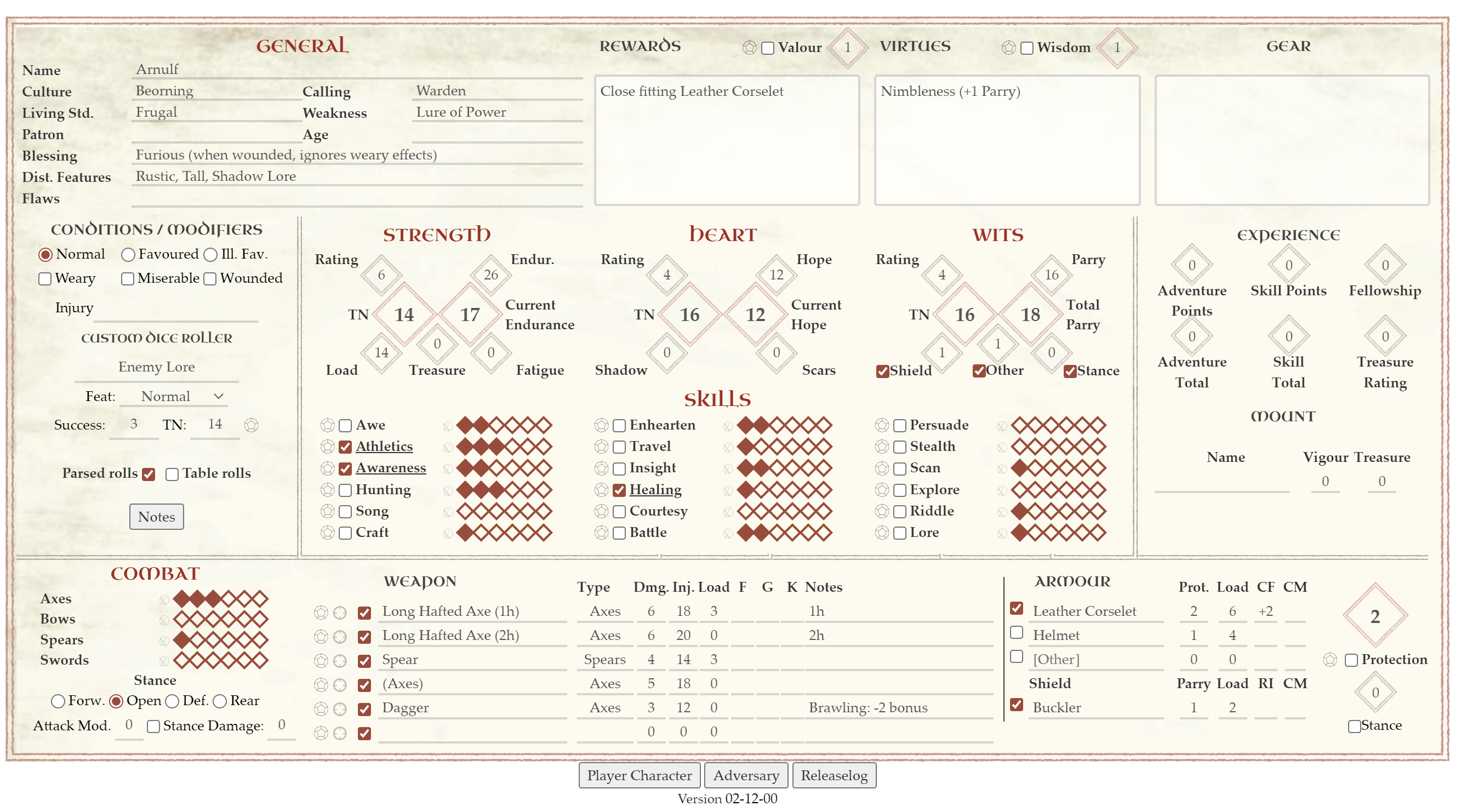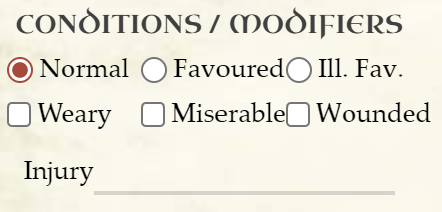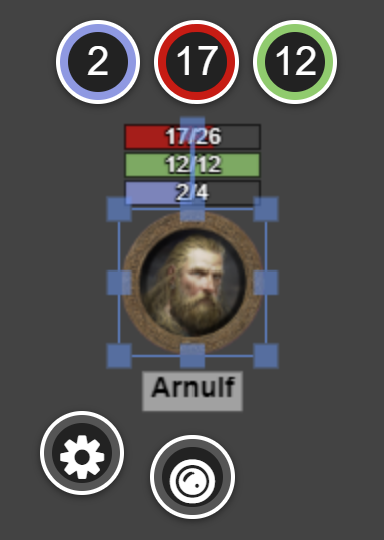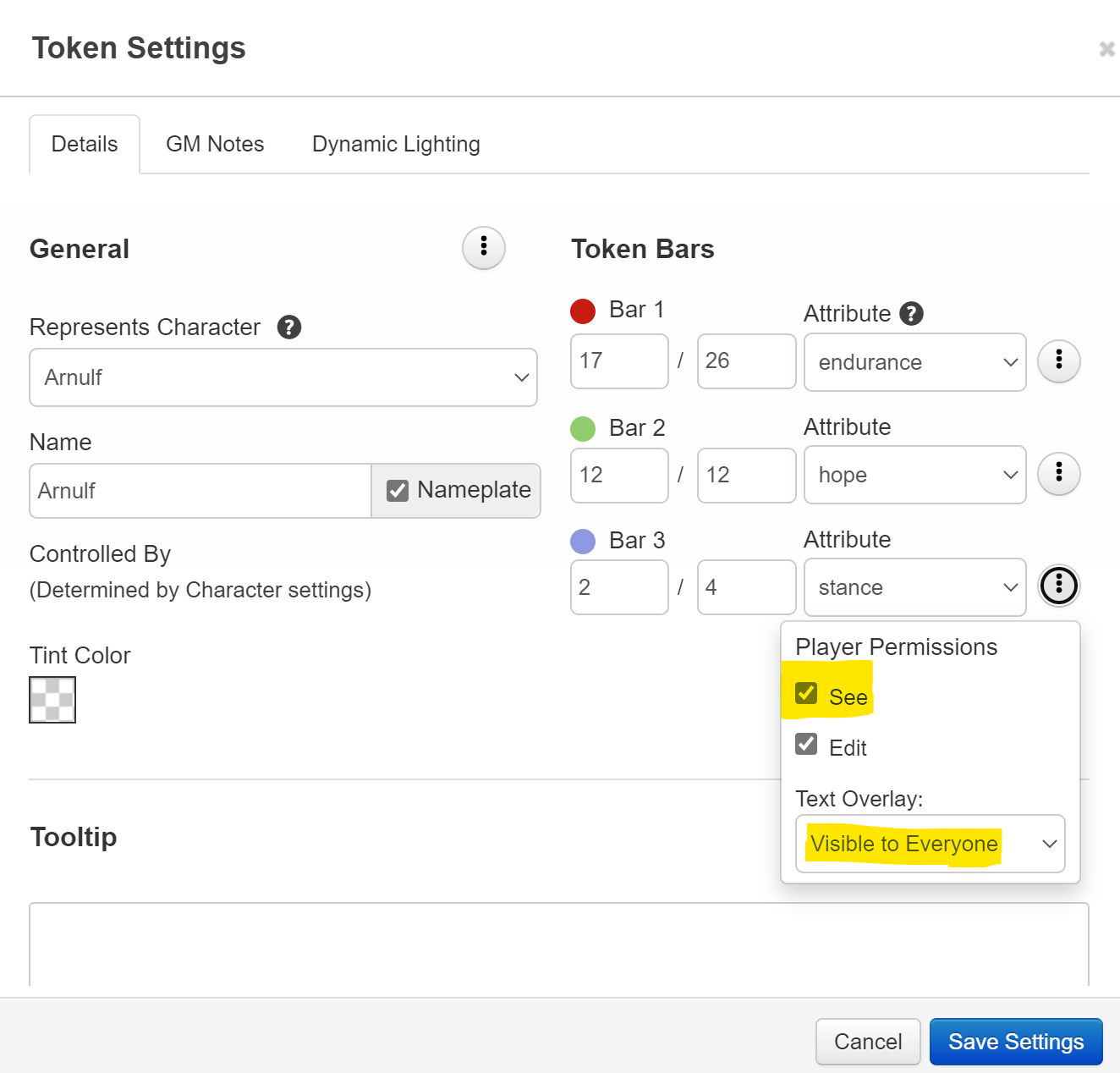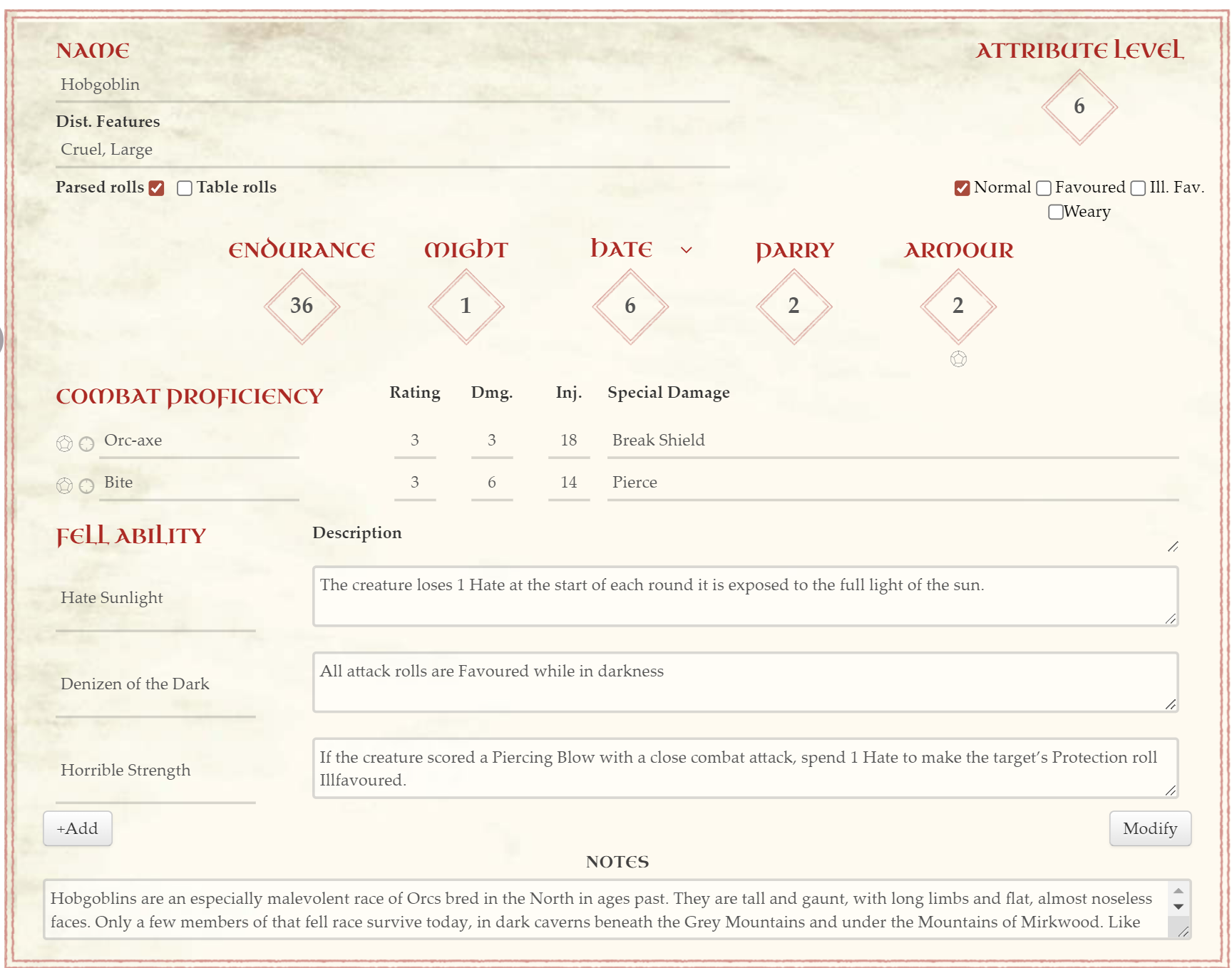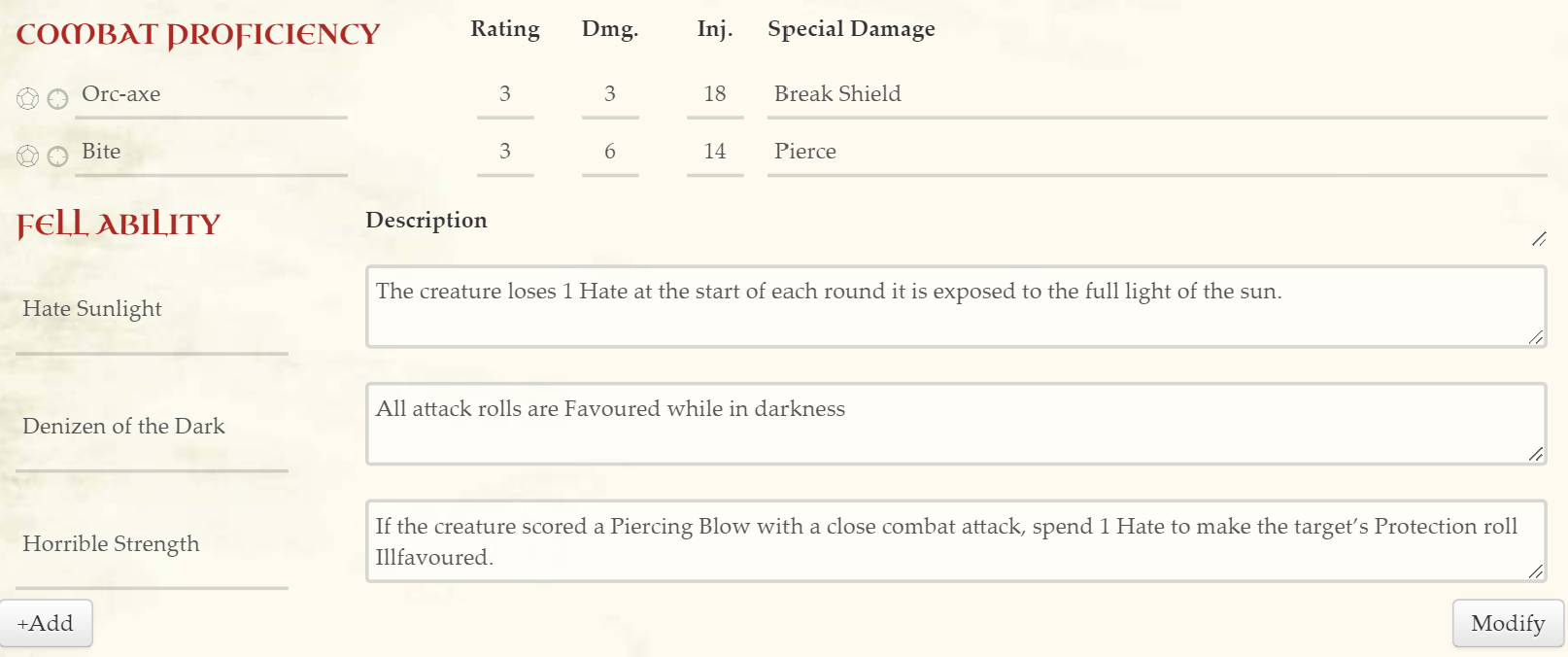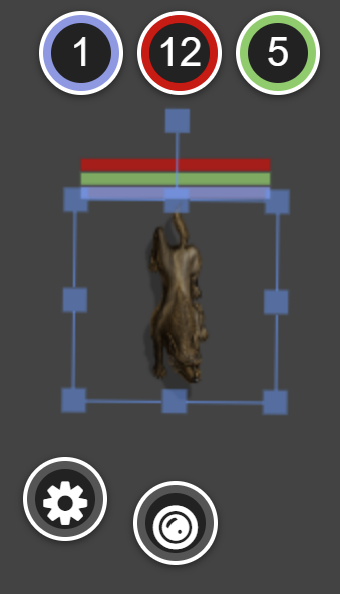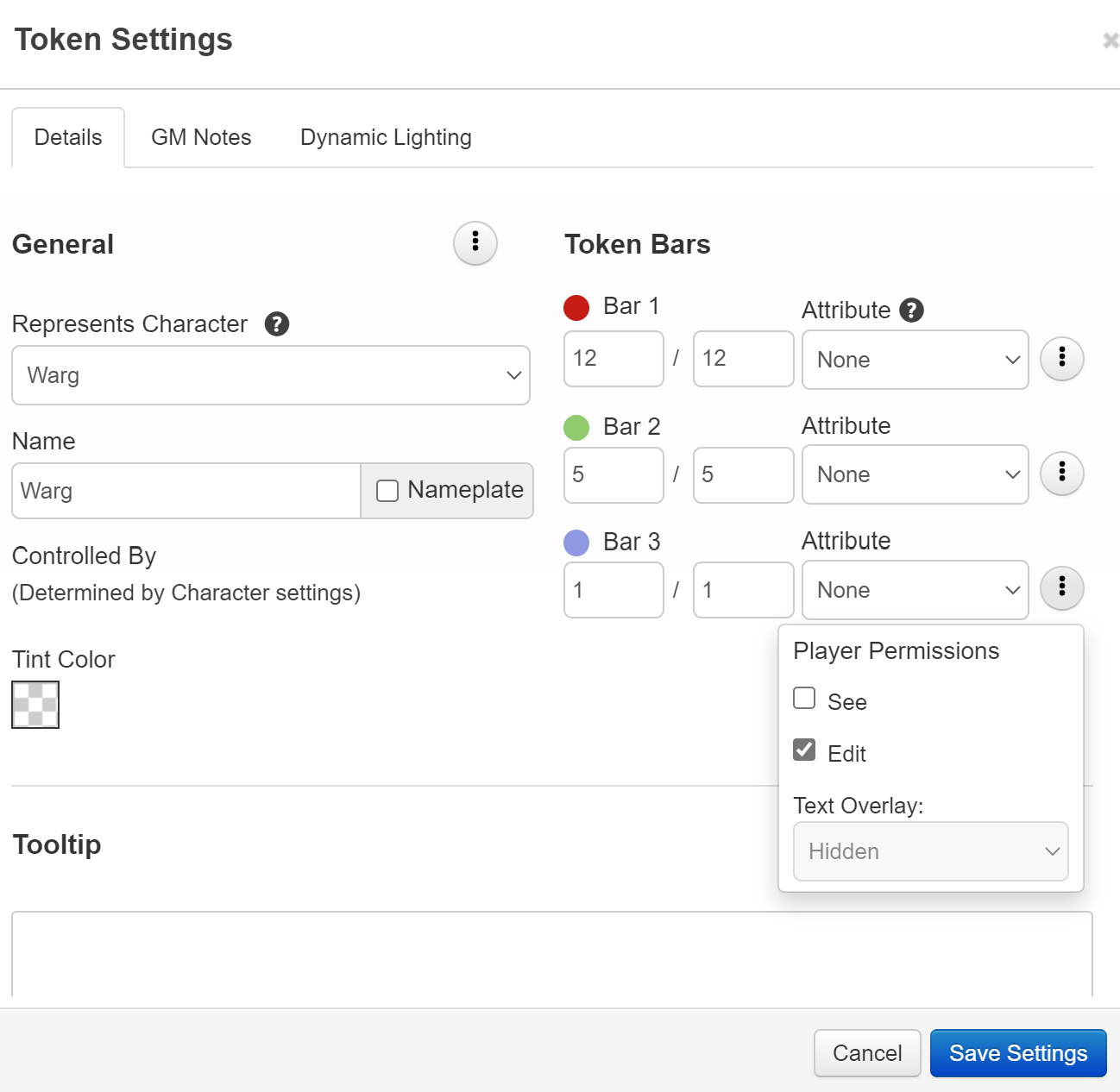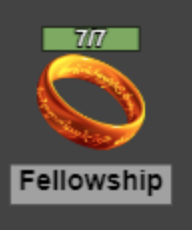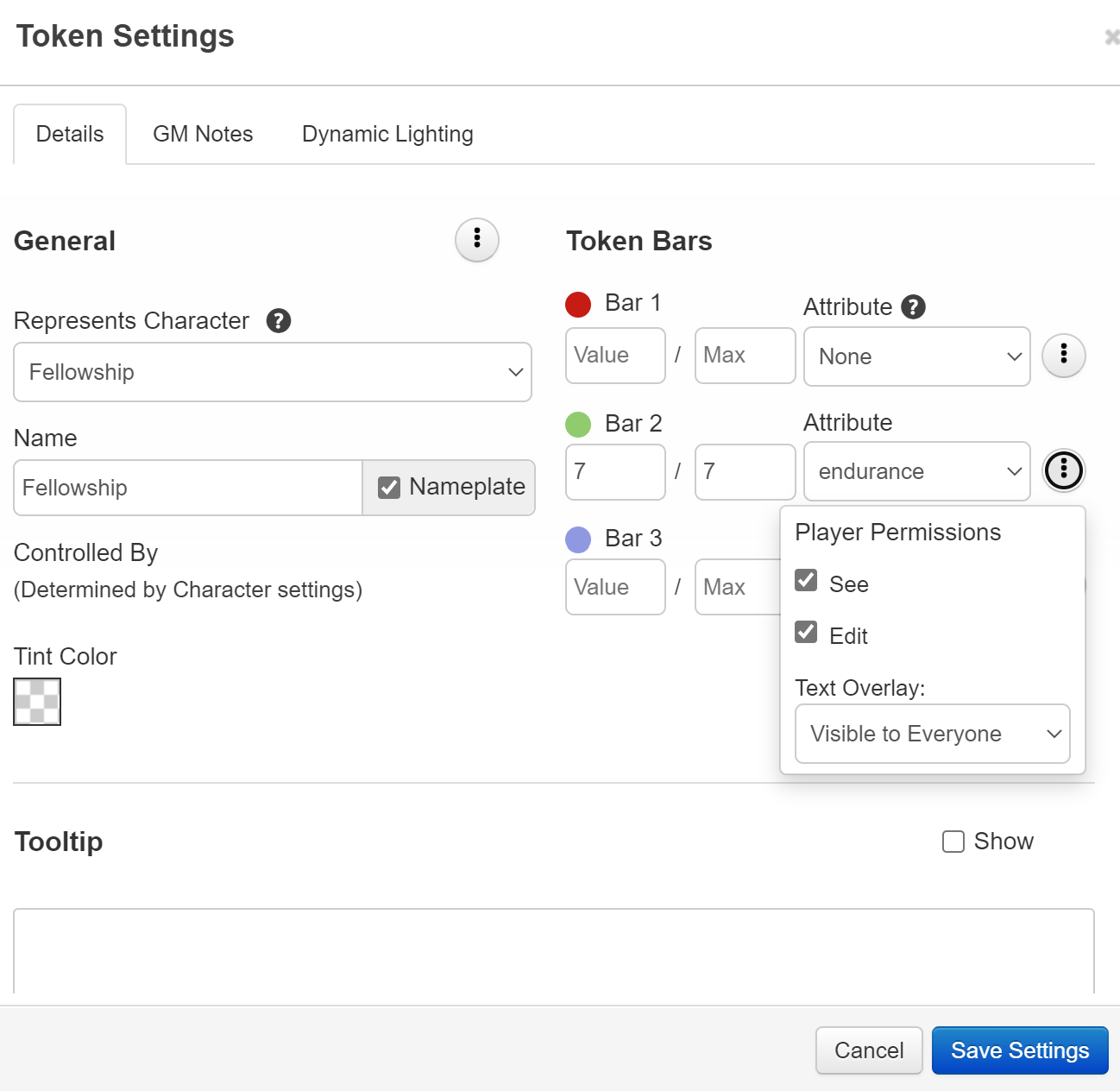The One Ring 2e
From Roll20 Wiki
Page Updated: 2022-03-27 |
This is an unofficial charactersheet for 'The One Ring Second Edition (tor2e) from Free League. The sheet was made by Bodo, Richard W., and Michael I. (aka Aragent)
The sheet includes no images or content from the game itself (e.g. no compendium) but features full support for the core rule system. It includes charactersheets for player characters (pc) and adversaries (adv).
Some of the core features
- Ready to play with direct support for tor2e dice without the need to setup custom roll-tables (like needed for the tor1e sheet)
- General attributes, skills, and combat proficiencies
- Automated calculation of parry, protection, and load depending on equipped gear
- Support for handling weary, miserable, (ill)favoured rolls and optional bonus dice
- Attacks with optionally selecting the target and target's parry integration
- Macro bar support with drag'n'drop rolls from the sheet
- Parsed rolls and a custom roll-template that derive success and interpreted results
| This article is under construction. Please help to make it better! (2022-03-27) |
Contents |
Player Characters
This section will explain
- Player charactersheet creation
- Derived conditions for pc
- Modifiers for rolls
- Token setup to speed up combats
Character Sheet Creation
The sheet has several areas and is designed to fit on one page (landscape) for easy access to all aspects of a character.
General
In this area you describe the background of a character. The input on the left side and the Virtues/Rewards area are purely informational and have no specific sheet functionality.
The Wisdom and Valour rating can be checked to mark them favoured.
Click the dice symbols next to Wisdom/ Valour to make a Shadow Test against Sorcery/ Dread. The Gear area to the right is used for Useful Items and other noteable gear alike.
Attributes And Skills
This area is divided into two parts:
- Attributes and Derived Stats (top)
- Skills (bottom)
Attributes and Derived Stats
The base attribute ratings and Target Numbers (TN) for Strength, Heart, Wits are set during character creation. You should derive Endurance, Hope, and Parry following the heroic culture definitions. They will not change during gameplay.
Current Endurance and Load
- During combat Current Endurance is changed manually according to damage and recovery. The Treasure load (center) is representing weight due to carried treasure and should be set if players don't have a mount that can be used. The total Load (left) is the calculated sum over all weapons, armoury (if checked), and Treasure load. Fatigue (right) is representing the journey burdens and will be set during journey phases. Total Load plus Fatigue is used to derive the Weary status of character (s. Conditions).
Current Hope and Shadow
- During adventures players can spent their max. Hope and set Current Hope accordingly. Shadow points or even 'Scars' represent their mental health and are used to calculate the derived Miserable status (s. Conditions).
Total Parry
- The Total Parry is a calculated field and the sum of base Parry, Shield (if checked), Other (if checked) parry (e.g. due to a virtue), and Stance specific parry (normally zero, but may be relevant for specific cultures). Stance parry will be checked automatically when in open stance (s. Combat). The values and checked status for Shield and Other are in sync with the armour section.
Skills
All Skill ratings are represented by the number of diamonds and correspond to the number of success dice used for rolls. Favoured Skills should be checked and will lead to favoured rolls (keeping the highest of two feat dice). If you want to set a skill to zero you click the small x sign left to the six diamonds. To roll a skill click the dice symbol next to skill. The roll will query for bonus success dice (which can also be negative) that the loremaster may give depending on the context and situation.
Combat
The combat area is divided into the following sections:
- Combat proficiencies
- Weapons
- Armour
- Protection
Combat Proficiencies
Combat Proficiencies are set the same way as Skills. On the left you see two dice buttons to roll your combat proficiencies (you can find the same buttons next to the weapons explained next). Use the left roll buttons for combat rolls without using tokens. It will ask you for the target's parry and bonus dice modifier. Use the right roll buttons for combat rolls using tokens to target the adversary you want to attack. It will derive the parry modifier from the selected target and ask for bonus dice only. For standard attacks you should better use the weapon specific roll buttons to automatically take weapon qualities into account and provide more output in the roll-template.
Weapons
The weapon area is describing all weapon related information, such as the Weapon Name, Type (which will relate to the Combat Proficiency), Damage, Injury Rating, and Load. The checkbox next to the weapon indicates if the weapon is equipped (and thus adds to the total Load). You can use this to reduce 'Load' after throwing your Spear. For two-handed weapons (with different damage) you could define the weapon two times to distinguish single/two-handed combat and uncheck one of the entries to not double the load (alternatively reduce load of one entry to zero).
Additionally for each weapon you can define the weapon quality, such as
- F: Fell (manually add 2 to the Injury rating of the marked weapon) - there is no automatic change of the Injury rating.
- G: Grievious (manually add 1 to the Damage rating of the weapon) - there is no automatic change of the Damage rating.
- K: Keen (attack rolls made with a Keen weapon score a Piercing Blow also on a result of 9 on the Feat die) - rolls will take this into account automatically
Armour
This section describes the general Armour, Helmet, or Other protection modifiers of player characters and their Shield. The checkbox represents the equipped status and unchecked items will not add to Load, Protection, or Parry ratings.
Armour qualities:
- CF: Close Fitting (all Protection rolls add +2) - this will be calculated automatically
- CM: Cunning Make (manually reduce the Load rating of the item by 2 (to a minimum of 0))
Shield qualities:
- RI: Reinforced (manually add 1 to your shield’s Parry bonus)
- CM: Cunning Make (manually reduce the Load rating of the item by 2 (to a minimum of 0))
Protection
This area shows your total Protection rating (calculated as the sum over all equipped armour and optional Stance related protection bonus that will be checked/activated automatically when you are in defensive stance). The stance protection bonus will typically be zero but might be relevant for specific (cultural) virtues/blessings. The checkbox for Protection itself will mark it favoured which may also be relevant for certain virtues.
Conditions/ Modifiers
The sheet will automatically set the weary/miserable condition based on the core rules (players should manually check the boxes only in non-standard situations). Rolls will be modified accordingly, e.g. when weary the 1-3 success dice will not count for the result and Sauron's Eye will fail a roll if the character is miserable.
The global feat-die modifiers for favoured/ill-favoured are under manual control for players and will affect all rolls. The sheet will correctly handle combinations of global favoured/illfavoured modifiers with favoured skills. The wounded checkbox has informational purpose only. Players can use the Injury also to track the days left until they are restored.
Token
The use of tokens is optional for the gameplay itself but will help to handle battles better.
The token for player characters as shown above has three bars:
- Red: endurance
- Green: hope
- Blue: stance
This section describes the setup and use of player tokens in detail.
Token Setup
You can find a generic guide how to link tokens and characters here. The following image shows the general setup of a player character token for tor2e.
When you assign endurance, hope, and stance to the bars the current and max. values will be set and synced automatically. Make sure to make the stance bar visible to everybody (for clarity) and endurance/hope only for editors.
Token Gameplay
Adversaries
This section will explain
- how to create Adversaries
- token setup
Creating Adversaries
General
Skills
Combat
Adversary Tokens
Roll Templates
Roll Tables
- parsed roll vs. roll-table setup
- event tables
Best Practices
- journey event log
- fellowshiptoken





